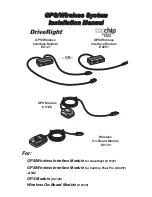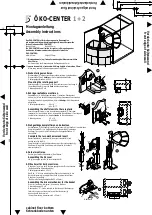
Long Gage Strain Sensor |
os3610
C o p y r i g h t © 2 0 1 2 M i c r o n O p t i c s , I n c .
o s 3 6 1 0 I n s t a l l a t i o n G u i d e , R e v i s i o n A
5
Figure 6
– Concrete Mounting Bracket
Prepare the test surface by drilling two ½ inch [13mm] diameter holes properly spaced. To
maintain hole spacing and alignment it is necessary to use the Grout-in Drill Guide listed in the
“Installation Tools” section. The distance between the holes is determined by the gage length
purchased. The distance between the holes is equal to the gage length. Standard gage lengths are
25.4 cm and 100 cm. The holes should be a minimum of 3 ½ inches [64 mm] deep. To use the
Drill Guide, clamp it to the surface. Place hammer-drill in hole on one end of drill guide and drill
hole. Place 1/2 inch round bar through drill guide into hole just drilled. This will help hold Drill
Guide in place while second hole is drilled. Now Place hammer-drill in hole on other end of Drill
Guide and drill hole. Clean out holes with vacuum or compressed air. Attach the mounting
brackets to the Setting Bar as shown in Figure 3 to maintain proper alignment and spacing. Grout
the mounting bracket studs into place in the drilled holes using an anchoring cement or high
strength epoxy. Allow the grout or epoxy to cure before removing the Setting Bar.
Sensor Installation:
Once the mounting brackets are attached to the surface to be studied, the sensor may be set in
place and pre-tension adjusted. An interrogation unit attached to the sensor may be helpful in
adjusting pre-tension.
Notice that one end of the sensor has two windows cut into the steel tube (Active-end). The other
end has a hex crimp (Fixed-end). Set the sensor in place by placing by aligning the sensor flats
into the mounting brackets as shown in Figure 7.































